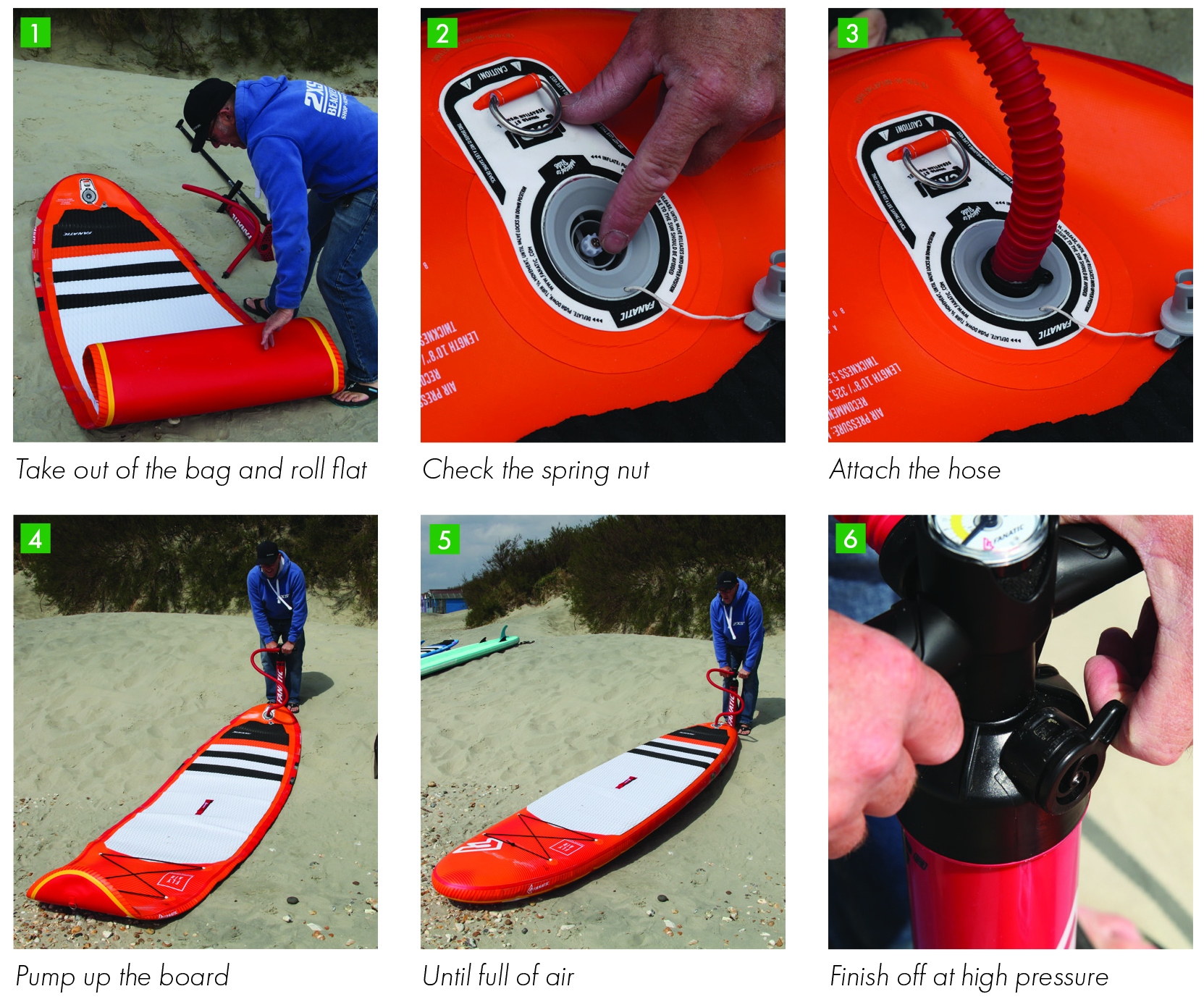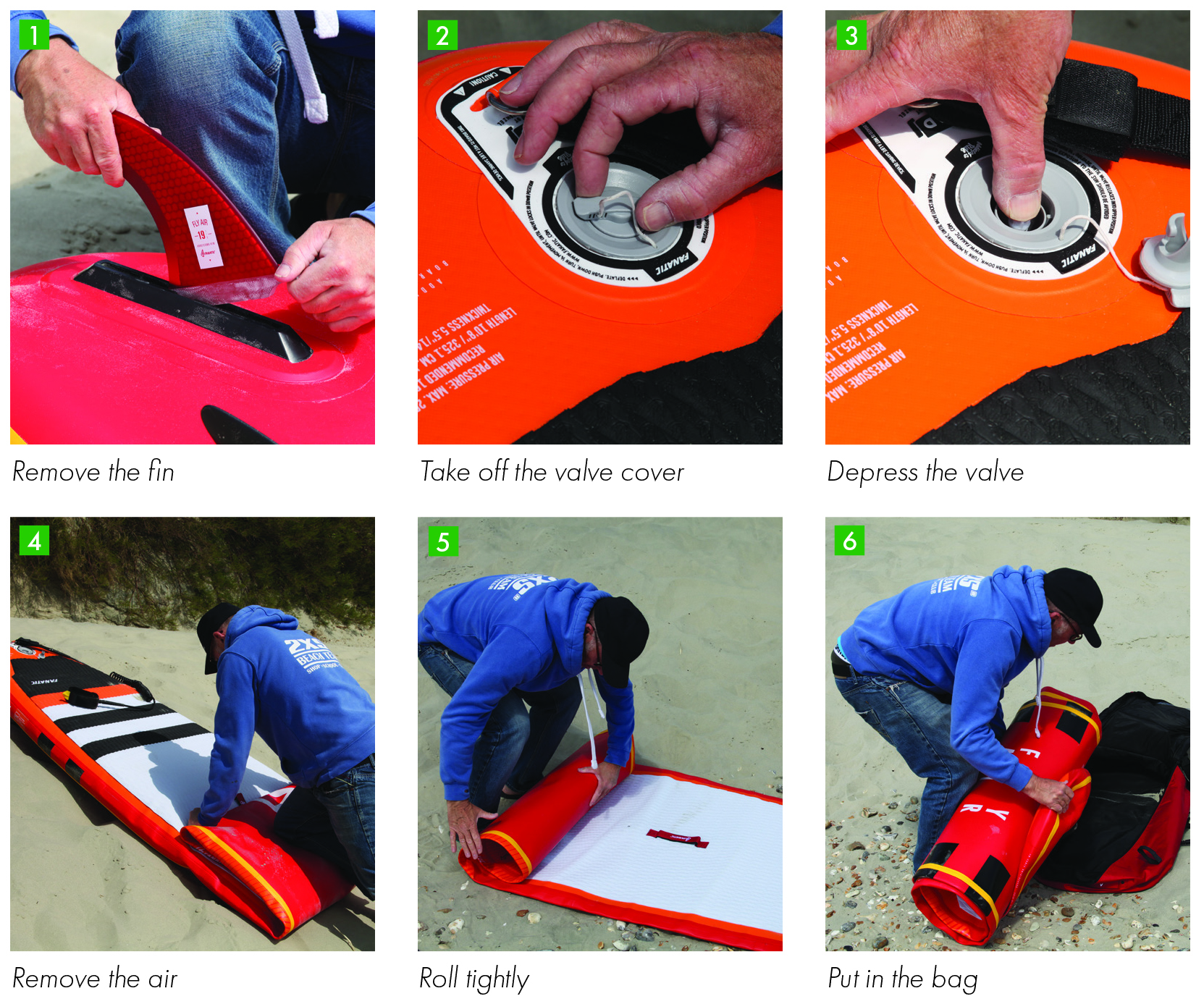Inflating & Deflating A SUP
Book Extract
Inflating
Inflatable SUPs (ISUPs) need to be inflated. You get a hand-activated pump supplied with your board, with high / low pressure settings and a pressure gauge. The gauge has measurements indicated in PSI / BAR.
Roll your board out flat. (Don’t worry about fitting the fin first, if you have that type.) Take the valve cover off and you will notice, when you look at the valve, that you have a centre plastic sprung nut. This valve has open and shut positions operated by turning the sprung nut to the left or right. Depress and lock the nut to deflate. To inflate, make sure the sprung nut is not depressed and turn left or right and gently push down to unlock. This is not obvious at first but, when you attach the hose from your pump, make sure that the spring-pressured centre nut is fully locked.
When inflating your board, check there is no debris / sand around the pump or valve area.
Pumps supplied by different brands have high and low-pressure settings: a low-pressure setting to start to fill the board full of air and then a high pressure setting to finish off, so it becomes hard and set to maximum PSI.

The maximum pressure will be indicated either on your board or in the instruction manual. On an average board size of 10ft/4in to 10ft/6in, it will be 15-20PSI. The harder the board feels, the stiffer the ride and the more stable it will be. It’s always worth pumping your ISUP to maximum pressure to get the most out of the board.
Inflatable boards can be left inflated for some time (hours, days or weeks) but they should not be left in direct sunlight, so semi-deflate them in hot climates and keep them out of the sun. Each time you go out on the water, check the pressure and top up with air if required.
You can buy double- or triple-chamber hand pumps or there are electric options (mains or car battery-powered, or rechargeable) to make it easier to get the maximum PSI out of your board. If you purchase an electric pump, check it is supplied with ISUP valve fitting for the hose. You can also buy high-pressure pump attachments, which make it easier to get to maximum PSI.
Deflating
When you come to deflate, remove the centre fin first if it’s a removable fin, then undo the valve cover and push down the spring valve nut and turn it to the left or right. This will lock the nut down and you will hear a loud hiss of air. Once most of the air has escaped, roll the board from the nose to tail, squeezing out the last of the air inside. Then return the valve back to its inflate position and replace the valve cover. Now your board is ready to go back in the bag.

Troubleshooting
If your board deflates slowly from new, check the inflation valve is seated correctly in the board and tighten it up with a valve key to prevent air leaks.
© Not to be reproduced without written permission from Fernhurst Books Limited.
Stand Up Paddleboarding: A Beginner’s Guide is written by Simon Bassett. Simon started stand up paddleboarding in 2006 when there were less than 10 paddleboarders in the UK. In 2007 he set up the British Stand Up Paddle Association (BSUPA), starting to develop the BSUPA teaching scheme and national SUP contests the following year.